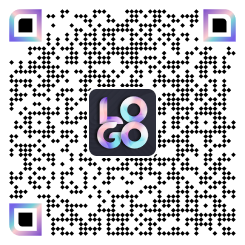Cryptocurrency data plays a pivotal role in financial decisions, especially for traders and investors worldwide. One of the most analyzed metrics is the BTC price chart, which reflects Bitcoin’s real-time and historical value shifts. However, interpreting this data can overwhelm everyday users, marketers, and small business owners. That’s where design tools come into play, enabling users to visualize complex crypto data clearly and engagingly.
Why the BTC Price Chart Is More Than Just Numbers
The BTC price chart is not just an illustration of value variations; it is, in fact, a price chart with an integrated machine learning algorithm that tracks macroeconomic shifts, market sentiment, geopolitical developments, and technological advances. Everything from institutional investments leading to sudden spikes to regulatory news causing drops works in unison. Formulas in the chart make sure a narrative is generated. As such, professionals must make sense of it and effectively communicate the insights garnered from it.
Interpreting Market Developments with the Help of Visuals
Instead of spending countless hours analyzing columns of BTC numerical data, marketers can make the information simpler with graphics. For instance, candlestick charts complemented with infographics portray the market’s highs and lows, average prices, and trend reversals deceptively simply to comprehend.
The Growing Influence of Analytical Marketing Towards Crypto
With crypto adoption on the rise, marketers in the fintech and blockchain sectors are leaning into data-driven content. According to HubSpot’s 2024 video marketing report, 73% of video marketers find video marketing effective in reaching their companies’ overall business goals.1 Displaying real-time BTC price data on newsletters, social channels, or client dashboards can increase user engagement and establish authority.
BTC Statistics Made Simple with Infographics
Callout templates like “Cryptocurrency Market Trends” or “Weekly Financial Summary” make it easy for users to convert raw information into professionally appealing graphics. These infographics can display
- BTC price week-over-week changes
- Steady growth graphs
- Market sentiment indicators
- Trading volume overlays
An infographic on Bitcoin’s performance in the last 30 days can be crafted using line graphs with daily percentage change markers and trend icons.
Flyers and Posters: Driving Marketing Strategies for Crypto Events
Crypto educators or event organizers can use stunning flyers that capture BTC data. For example, if a seminar discusses market cycles, it would be helpful to provide a current BTC price chart along with a historical data context with annotations as BTC stands at a particular value. Furthermore, a QR code can also be embedded within the design that links to live charts.
Weekly BTC Reports
Content creators or financial consultants providing insights about BTC will benefit from customized weekly report templates. Such reports can include charts, price statistics, and texts provided by real-time updating APIs. These reports are an enormous blessing for the readers, with a neat table displaying the price shift from Monday to Sunday, including trading volume and essential resistance levels.
How Social Media Graphics Can Emphasize the Volatility of Bitcoin
Cryptocurrency traders spend a lot of time on social media sites like Twitter and Instagram to gain insight into the ever-changing cryptocurrency market. Social media graphics can help create posts that visually represent Bitcoin’s daily volatility, for example.
- An Instagram story with a 5 percent decline in BTC represented with a red line trend graph.
- To sum up the week’s performance, a multi-image Instagram post with a visual element could be created.
- BTC prices with emojis and current price statistics can be used as a cover picture for a reel.
These posts allow users to enable them to broaden their scope and engagement across different social media platforms.
Creating Informative Brochures Explaining the Concept of Bitcoin
The majority of small businesses and start-up companies within the financial technology sector spend their resources trying to explain cryptocurrency to their customers. A brochure explaining Bitcoin basics alongside a real-time synced BTC price chart can do wonders. Using visually appealing designs for past performance, halving cycles, statistics on mining, future predictions, and so on will enhance information retention and foster user trust.
Real-World Example: A Marketer’s Weekly BTC Trend Update
BTC Incorporations may help Maya, a Berlin-based marketer who works with crypto clients on a freelance basis, build and retain her client base. She integrates BTC data into design and infographic tools, which then allows her to create
- A header visual on BTC performance for the week.
- A mini-infographic on key resistance and support levels.
- Milestone icons that indicate bullish or bearish trends.
- A QR code linking to a complete BTC chart analytics system, she integrated into her corporate webpage.
All this improves usability but also makes Maya look professional while allowing her clients to engage more meaningfully.
Global Bitcoin Data: Trends That Need To Be Designed Around
As of April 16, 2025, Bitcoin is trading at approximately $83,348, with its volatility influenced by macroeconomic factors such as inflation reports and the approval of exchange-traded funds (ETFs). As of April 7, 2025, the global Bitcoin network hashrate increased by 9.64%, with the 7-day simple moving average rising from 830 EH/s to 910 EH/s, reflecting growing mining competition and network security. These real-time milestones are ideal for creating visually dynamic reports and market breakdowns.
Incorporating Chart Patterns Into Marketing Graphics
The Head and Shoulders, Cup and Handle, and Double Top patterns are integral parts of BTC’s technical analysis. Marketers can promote financial literacy by designing educational graphics that teach BTC audiences these common patterns. With the appropriate technical price movement overlay and pattern diagram annotation, technical analysis becomes easier for many novices.
Adding Technical Indicators to Your Visuals
For added visual accuracy in BTC price action analysis, integrate technical indicators such as the RSI, MACD, or Bollinger Bands. These indicators provide more scoped context to price movements and, when applied correctly, they can increase the clarity of buy/sell signals. An example would be placing the RSI line under a BTC price chart so that it’s easy to determine the point at which BTC is overbought and oversold.
Localization: Creating BTC Illustrations for Specific Markets
Expanding international audiences, visually accessible region-specific BTC diagrams, increase the appeal of BTC for different viewers. Personalized user experience can be achieved by adding local currency conversions (BTC to EUR, BTC to INR), localized economic reasons, and translating the graphic into the corresponding local language. Local influences such as policy announcement volatility, trading volume, holiday season, or contextual rich elements can greatly expand its relevancy.
Design Precision: Importance of the Live BTC Data
Live BTC price data is relevant for real-time tracing and accuracy. Accuracy means integrity, which directly correlates with designing with current data. Regardless of whether it’s a monthly trend report or a daily chart breakdown, data needs to be synced, hence alignment. The allocation of work by automation aids in removing or minimizing errors and keeps updates timely.
Tips for Choosing the Right Color Schemes for Crypto Reports
While creating graphs for BTC figures, incorporate the following recommendations:
- Implement red and green to clearly represent increase and decrease because these colors are widely accepted marks in all domains of finance. Losses are signified in red, which are negative, while profit, which is depicted in green, indicates positive movement. Green being associated with growth places these visual cues at ease for users as they interpret data within a second while busy attending to many strategic functions and gaining insights across different organizational levels.
- Use only black or dark gray colors for the chart backgrounds to align with trading platforms.
- Gradients should be used minimally in order to not disrupt focus.
- Colors should remain constant across all visual elements to create brand identity.
Typography and Layouts That Boost Visual Engagement
The extensive collection of financial-themed fonts and grid layouts increases BTC data presentation visually. For optimal response:
- Price points and headers should be written in bold.
- Subheaders for trend summaries should be included.
- Text should be left-justified for scanning ease.
- Add whitespace to improve readability and avoid clutter.
- Long text should be converted into bullet points or short paragraphs.
A layout that is uncluttered simplifies the interface and encourages users to engage with the content.
Print and Digital Design
Flexibility for print and digital use must be incorporated into any BTC visuals. Infographics and social media posts should be designed for mobile and web, while flyers, brochures, and posters need to be readily available in print-friendly formats. Attention to file size, resolution, and orientation improves performance on all platforms.
Psychological Aspects of Learning Visually about Finance
It has been shown that people can recall and comprehend visual information about 60 thousand times quicker than text. In high-risk endeavors such as crypto investing, the visual representation of data improves recall and supports processing speed. Labeled icons, arrows, and rising or falling trends that graphically represent information alleviate cognitive barriers, particularly in the case of novices who do not possess specialized knowledge about trading systems.
Conclusion: Empowering Users with Data-Driven Visual Design
The synergy between cryptocurrency analytics and visual design cannot be overstated in a world increasingly shaped by real-time data and rapid decision-making. Leveraging smart templates, real-time data integration, and thoughtful design principles allows anyone to make BTC data not only understandable but also engaging and impactful. Visual storytelling helps break down complex information, enabling broader audiences to stay informed, inspired, and connected to the digital finance world.
References
- According to HubSpot’s 2024 video marketing report, 73% of video marketers find video marketing effective in reaching their companies’ overall business goals.














